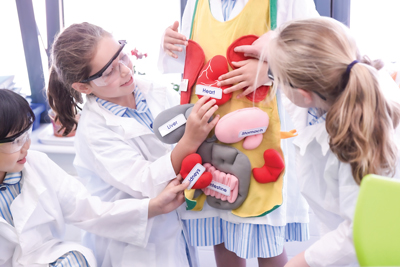
Burgess Hill Girls’ Head of Economics, Politics and Business, Dionne Flatman discusses the benefits of children learning about democracy and the workings of government as early as possible.
Not just for A Levels
For 35 years I have been a teacher of A Level Economics, Politics and Business, as well as PSHE (Personal, Social, Health and Economic Education), Citizenship and General Studies. Although my focus is on A Levels and therefore older students, I strongly believe that these subjects, especially Politics should play a broader role in the curriculum in both senior and primary schools.
Politics has a significant effect on students’ lives from the day that they are born until the day they die. I want students to understand and value democracy and free speech and empower them to be active citizens. I have spent my teaching career trying to debunk the myth that these are academic subjects for experts, rather than what lies at the heart of students’ lives.
My degree is in Politics, Philosophy and Economics, but I do not think that is how I learned to be political. I am interested in the moments that fire up young people to participate and engage. That could be the school putting on a production of ‘Made in Dagenham’ or students discovering that apartheid continued to the 1990s.
To fulfil my ambition to educate a larger number of students both within and outside of Burgess Hill Girls, I recently trained and qualified as a UK Parliament Teacher, learnings which I am in the process of passing on to younger students in our school and other local schools through various initiatives.
Making politics relevant to younger audiences
One of the key challenges in educating younger audiences about how democracy and UK parliament works, is making it relevant.
Some years ago, I participated in a pilot study which looked at holistic education rather than book learning. Many schools feel they have covered cross curricular themes once they have done a curriculum audit. I think it is important to introduce something fresh and new rather than sit back and say “yep, already doing that.” Developing learning through workshop and project-based activities has impact.
At Burgess Hill Girls, we have developed a number of initiatives to increase children’s engagement with politics. We ran a mock general election alongside the 2019 election and will do so again with the up-coming election. When I launched the mock election, I wanted to get the very youngest pupils involved so I ran a competition in the Prep school to design posters to encourage voting. It opened my eyes to the fact that you can never be too young to start learning about democracy and citizenship. For Year 8 students we run a Democracy Day, where students take part in a range of activities including an online ‘be an MP for a week’ game and designing posters which they then use to take part in a mock peaceful protest. For Year 10 students we run a speech writing workshop where they learn what makes a good and bad speech and then give them the chance to write their own, including creating an alliterative one liner.
Democracy Assembly for primary schools
One of our newest initiatives is a Democracy Assembly for younger audiences. We first ran this in our Prep School and are now taking it out to local Primary Schools like Southway Junior School in Burgess Hill. Given the ages of the audience it is important to make the assembly as interactive as possible. We do this by using videos, displays, roleplay with dressing up outfits and banners with key democracy terms for children to hold up. Because the children play an active role in the assembly, they learn much more as a result. Teachers have also said that the assembly has taught them an awful lot and that they feel more confident in their teaching as a result.
It is important for everyone in schools to feel confident about discussing UK democracy and politics. My aim is to encourage active citizenship and to demonstrate how young people can influence decision making. Becoming a UK Parliament Schools Ambassador has set me on the path to achieving this.
If you are interested in Dionne giving her democracy assembly at your primary school, please feel free to contact her via www.burgesshillgirls.com
To find out more about Burgess Hill Girls, visit www.burgesshillgirls.com













